Not quite enough
This week: Orchard work; Not quite enough for a pie; Why I don’t burn;
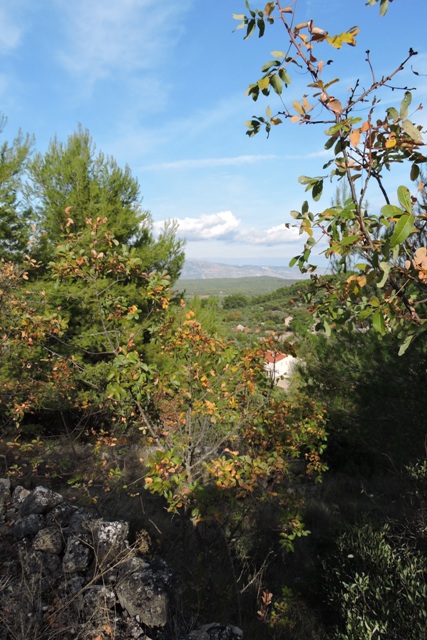
Dol has moved into winter this week. On two mornings the temperature just around dawn has been only 7.5°C, our typical winter average temperature.
Conversely, I have been in a tee-shirt working in the garden, because the sky has been clear and the sun has been warm, even hot.
I’ve even thought about lighting the wood stove, however the inside temperature is still above 18°C. That is my threshold temperature for my comfort.
Usually I light the fire in the second week of November, so it is about that time of the year.
I hate it when things break and get very frustrated when built-in obsolescence means that you cannot get the replacement part you need to fix the item.
Sometimes you just have to be creative. Well, I’ve been creative again this week.
My home is typically croatian. The 70 cm to 100 cm thick walls are made of stone, bound with lime mortar, not cement. Window voids are small, because that keeps rooms cool in summer and warm in winter.
This means that my computer and writing desk are in a dark corner. On dull days, I need a light on to be able to work comfortably.
At this time of year, with shortening days and lower levels of sunlight, I often need a light on by mid afternoon.
I have a nice cantilever combined desk lamp and magnifier which swivelled in a plastic base, clamped to the edge of my desk.
A month or so back, the plastic base gave way and the lamp fell over.
I examined the problem, finding the plastic base was just not strong enough. I tried to find a replacement base on Temu and AliExpress but failed.
There were lots of new bases, complete with lamps, but no bases on their own.
Examining the base, I discovered that it was in two pieces. The actual base which held the lamp and a clamp unit, which slid into the base in a very snug hole.
That gave me an idea because I know that there is no general purpose adhesive which would stick the plastic back together again, with any degree of strength.
Hunting through my wooden offcuts box in the workshop I found the end of an 8×5 piece of timber which was just the right size.
Clamping it into my vice, I used a drill to bore holes of the right depth, then squared the aperture with a chisel to make a hole to fit the clamp. Testing it, I needed a little more depth. It is much easier to remove a little timber than to try and stick some back!
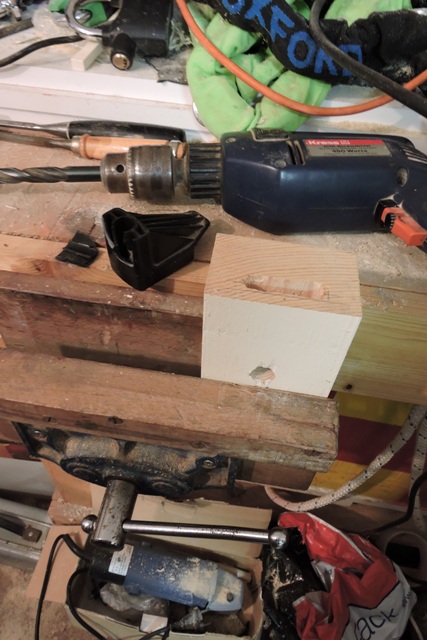
The final job was to drill a 12.5 mm hole across the grain, so the wood is at its strongest, to take the spigot on the end of the lamp.
It all worked and my lamp now is held firmly, but rotates as it should. True, the base is a little larger now, but I know that this one will not break any time soon.

The new base really does not look out of place.
Orchard work
Last week I posted the graphs from my weather station, specifically the precipitation, remarking that we are 100 mm or 100 litres/m² under the average.
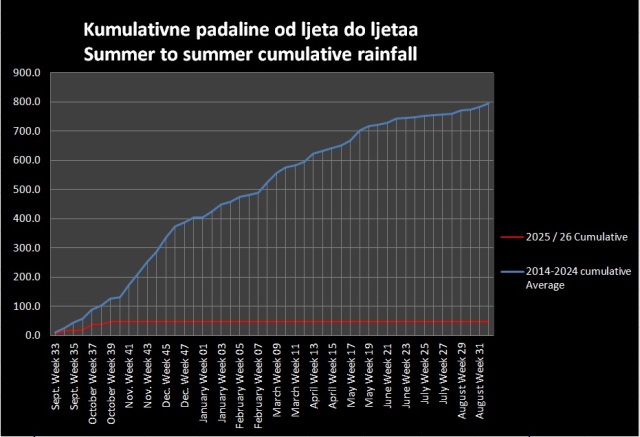
This week when I was looking at my winter vegetables and was surprised to see they were all wilting.

These are the Brussel Sprouts and Cauliflower, with a stray Broad bean and every single plant is desperate for water.

I went and filled my largest watering can and gave them a good soaking. I have never had to water plants in November before. This climate breakdown continues to throw low balls.
I’d thought that the meagre rain in October would have been enough, but clearly I was wrong.
It comes down to plant types. In the Top Orchard, the Loquat trees are in full blossom and are covered in bees, doing the pollinating.

Loquat trees originate in the cool hills of South central China, but haves been transplanted to similar subtropical to mild temperate climates around the world.
They are deep rooted and have had no irrigation since I planted them. They are flowering about a month early, but are not stressed.
This week I have continued working on the raised bed in the Top Orchard. I know the soil is dry, so have not planted anything yet.

I added compost to other beds and to a small area I had missed, then gave some to the olive trees.
Another job was cutting back the bramble briars on the embankment which separates the Bottom Orchard. While everything is dry, it has been easy to rake and pile it up ready for mulching.
Not quite enough for a pie
Working in the Top Orchard this week, I notices that some of my Pecan nuts were on the ground. Picking them up, I was surprised they were still green.
When I had been reading up about Pecans, I understood they turned brown and fell. These were still a very bright green.
I should add that this is my first experience with Pecan nuts, so I had been reading about the tree and the fruit. My understanding was that the outer husk would split and the brown shell containing the pecan nut would fall to the ground.
The three I picked up were still very green and I had to cut the husk to get at the nut.

The shell looked like the colours I had seen in the photographs, so I thought I would try and open one. Que music from Tchaikovsky’s “The Nutcracker” ballet!
The shell cracked easily enough, but the edible kernel inside was stuck to the shell. It was a pain to prize out.
The nut was soft and sweet, but didn’t have much flavour.
This is not what I was expecting! If one nut is this difficult to open, what happens when I (hopefully) have thousands?
So it was more reading. Definitely the husk should split to show the shell of the nut when it is ripe. So these three windfalls are really not yet ready.
Živa, my youngest feline loves climbing trees in this orchard, which she regards as her territory, so I wondered if she was the cause?
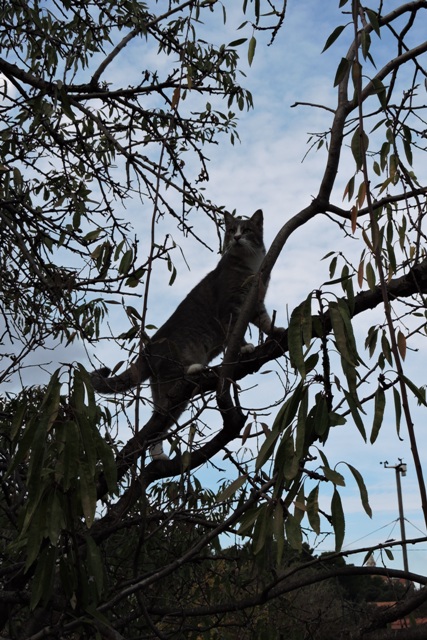
I also read that the shells are dried before they are opened. There is a lot to learn about these trees and nuts.
Then I found more photographs which suggested that the husk may open when still green.
The few nuts remaining on the tree, this is the first year it has had any, are definately still closed, so I will have to wait.
I did find two interesting videos about harvesting Pecans. It seems that in time, with three trees, I may need to invest in something to pick the nuts off the ground..
This is a longer video, showing how a small scale farmer with “just” 300 trees goes about his harvest and the machines he needs…
Three Pecans, do not a pie make….

Why I don’t burn
Every day now we are into November, I can smell those autumnal odours of a bonfire.
Whenever I go out to the shops and even from home, I’ll see the tell-tale smoke rising from the olive orchards around Dol.
We have had very little rain, so everything is dry and ready to burn.
I have two large piles of material, one in the Top Orchard and the other in the East orchard, which I am sure would easily and quickly burn.

However I don’t have bonfires any more on principle.
The reason is that these piles of material are home to eggs, larvae, insects, reptiles and this last week, I discovered a hedgehog.
I have thought for a while I had hedgehogs because I have seen their spoor, but I have never actually seen one, or even heard them.
What I will do in late winter, is to put these piles of material through my mulching machine. That way I can be careful and make sure that where ever possible I protect the wildlife which is living there.
I keep logs ready to be cut for the wood stove. But also, I keep the thick branches which are too thick for the mulsher, to be cut for the stove.
We have some rain forecast for Sunday, so in the bright sunshine this week, I set up my table saw in the east Orchard to reduce a pile of these 2 cm to 5 cm thick branches to size for the fire.
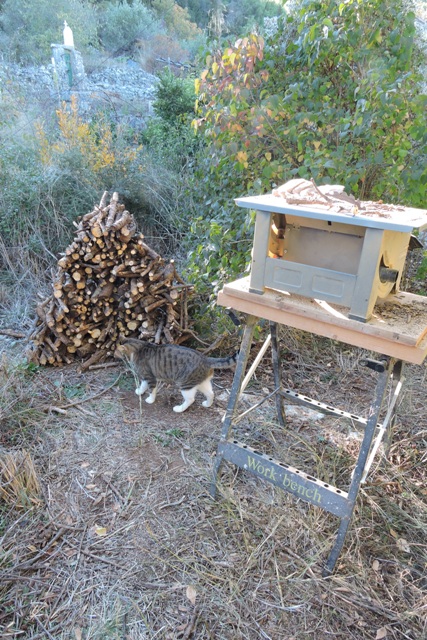
Anything bigger than 5 cm, I need a chain saw to cut.
I had not been cutting very long, when I saw there was an egg sack of a Preying Mantis. If someone is burning, this would have gone unnoticed and would have been consumed in the fire.

It was a coincidence, because that same morning I had seen a male Mantis hunting on one of my fig trees.
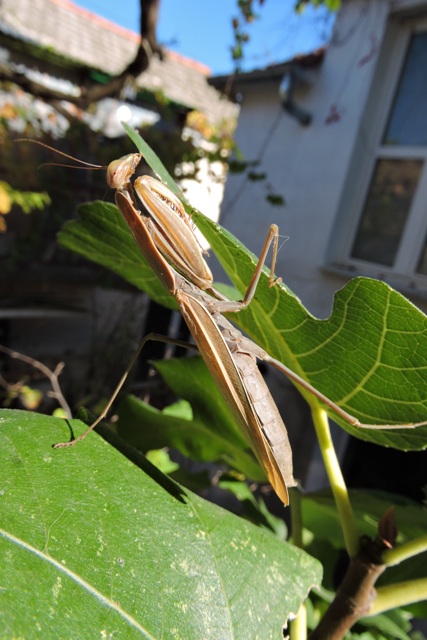
This is only the second one I have seen all year. He is at the end of his life. As soon as it becomes really cold (for here) he will die. So the egg sack will be all of next year’s young and adults.
The Mantis hatches and matures, reproduces and then dies, all in a single season.
I am more and more conscious of the wrecking ball that we humans are taking to the planet and try to do everything possible to protect what I can, in my own, very small world.
There is no Planet B. NCG